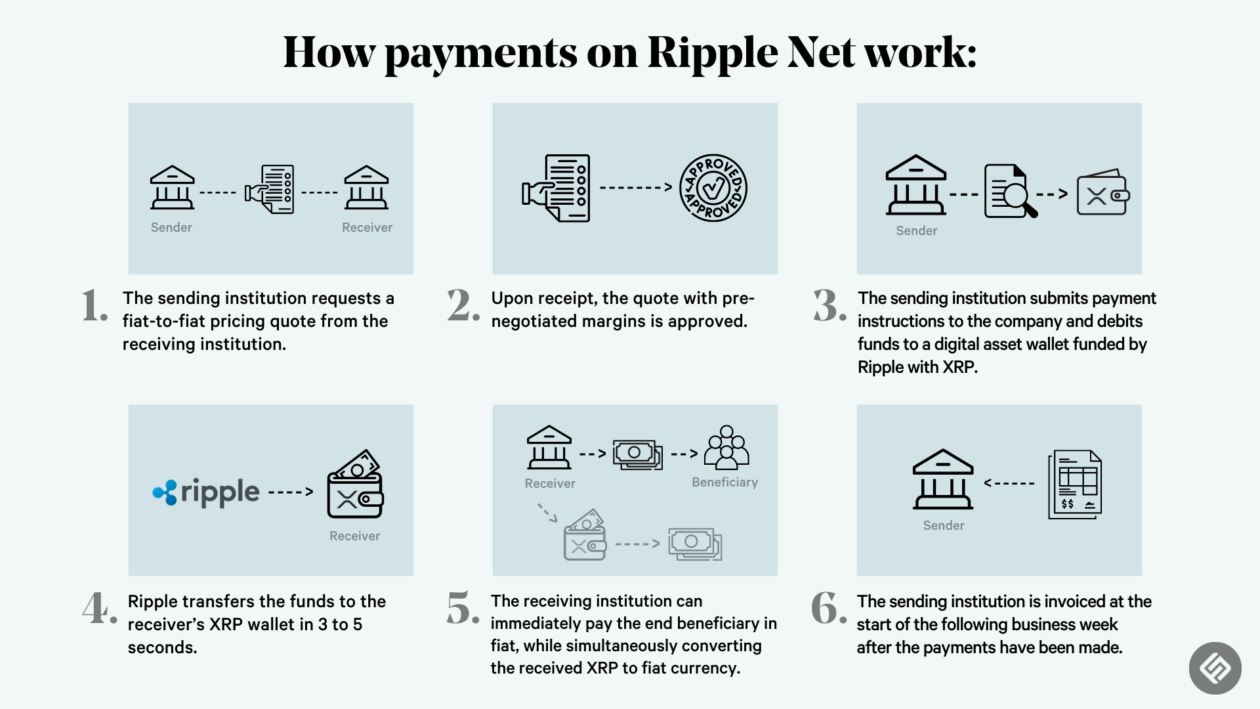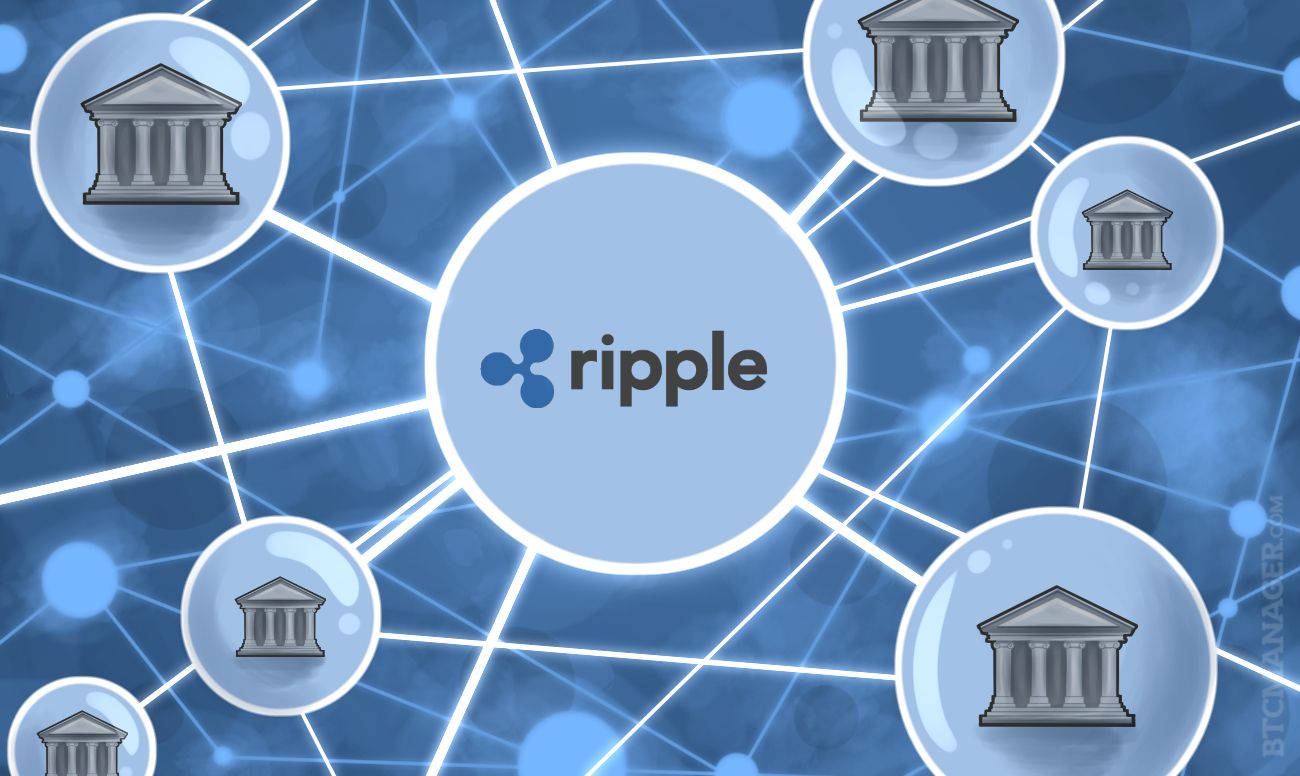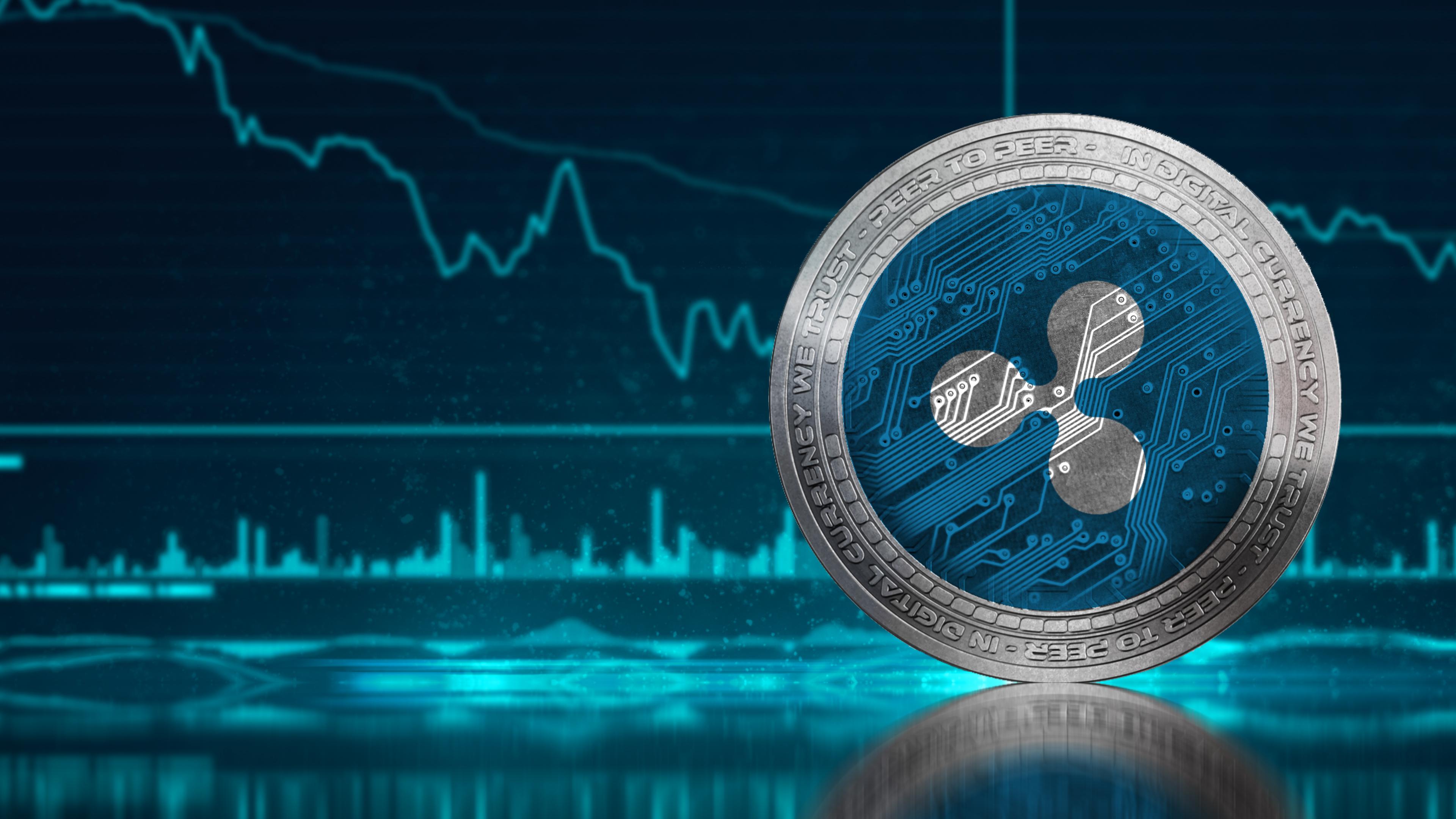Ripple XRP

Ripple is a global financial network and a cryptocurrency, XRP, that aims to facilitate fast, efficient, and low-cost cross-border payments. It was founded in 2011 by Jed McCaleb and Chris Larsen, with the goal of revolutionizing the way money moves around the world.
History and Origins
Ripple’s history is intertwined with the evolution of the financial technology landscape. It was initially conceived as a payment processing system for banks, but it later expanded its focus to include digital assets and blockchain technology. The company initially operated under the name OpenCoin, later changing its name to Ripple Labs in 2012. The XRP cryptocurrency, designed to be used on the Ripple network, was first introduced in 2011.
How Ripple and XRP Work
Ripple’s network is built on a distributed ledger technology (DLT) called the RippleNet. It operates differently from traditional blockchain networks, utilizing a consensus mechanism that allows for faster transaction speeds and lower fees. The RippleNet connects financial institutions, payment providers, and exchanges, enabling them to send and receive payments in various currencies, including fiat currencies and cryptocurrencies.
- XRP is a digital asset that serves as a bridge currency within the RippleNet. It facilitates the exchange of different currencies by acting as a medium of exchange. For example, if a bank in the United States wants to send money to a bank in Japan, XRP can be used to convert US dollars to Japanese yen without relying on traditional intermediaries like SWIFT.
- Ripple’s technology allows for near-instantaneous transactions. The RippleNet’s consensus mechanism ensures that transactions are validated and settled quickly, reducing the time and costs associated with traditional cross-border payments.
- Ripple provides a secure and reliable platform for financial transactions. The RippleNet’s decentralized nature makes it resistant to single points of failure, ensuring the integrity and security of transactions.
Key Features and Benefits
Ripple offers several key features and benefits that distinguish it from other payment networks and cryptocurrencies:
- Speed and Efficiency: Ripple’s network is designed for fast and efficient transactions, enabling near-instantaneous cross-border payments. This reduces the time and costs associated with traditional payment methods.
- Low Transaction Fees: Ripple’s transaction fees are significantly lower than those of traditional payment networks. This makes it a more cost-effective option for businesses and individuals sending and receiving payments across borders.
- Scalability: The RippleNet is designed to handle a large volume of transactions, making it suitable for large-scale financial institutions and payment providers.
- Global Reach: Ripple’s network connects financial institutions and payment providers worldwide, enabling seamless cross-border payments.
- Security: Ripple’s decentralized architecture enhances security by reducing the risk of single points of failure. The network’s consensus mechanism ensures that transactions are validated and settled securely.
- Interoperability: Ripple’s network is designed to be interoperable with other financial systems and networks, enabling seamless integration with existing infrastructure.
XRP’s Role in the Financial Ecosystem: Ripple Xrp

XRP, the native cryptocurrency of Ripple, has garnered significant attention for its potential to revolutionize the financial industry. Its unique features and functionalities position it as a versatile tool for facilitating cross-border payments, enhancing liquidity, and streamlining financial operations.
Use Cases of XRP in the Financial Industry
XRP’s role in the financial ecosystem extends beyond being a mere digital currency. Its utility lies in its ability to bridge the gap between traditional financial institutions and the emerging world of digital assets.
- Cross-Border Payments: XRP’s speed, low transaction fees, and global reach make it an ideal solution for facilitating cross-border payments. Unlike traditional methods, which can take several days and involve high fees, XRP transactions are completed in seconds and at minimal cost. This efficiency is particularly attractive for businesses and individuals engaged in international trade and remittances.
- Liquidity Management: XRP can be used to enhance liquidity in financial markets. By providing a readily available source of funds, XRP helps institutions to manage their cash flow and mitigate risks associated with currency fluctuations. This is particularly relevant for financial institutions operating in emerging markets or dealing with volatile currencies.
- Financial Institutions’ Interoperability: XRP can act as a bridge between different financial institutions, enabling them to interact seamlessly. By providing a common platform for transactions, XRP reduces the need for intermediaries and streamlines communication between institutions. This interoperability fosters greater collaboration and efficiency within the financial sector.
Comparison with Other Cryptocurrencies
XRP distinguishes itself from other cryptocurrencies by focusing on practicality and real-world applications. While other cryptocurrencies might prioritize decentralized governance or anonymity, XRP prioritizes speed, efficiency, and scalability.
- Speed and Efficiency: XRP’s transaction speed is significantly faster than many other cryptocurrencies, enabling near-instantaneous settlements. This makes it a more suitable option for real-time financial transactions, particularly for cross-border payments.
- Scalability: XRP’s network is designed to handle a high volume of transactions, making it scalable for future growth. This contrasts with some other cryptocurrencies that face scalability limitations, leading to slower transaction speeds and higher fees as the network becomes congested.
- Cost-Effectiveness: XRP’s transaction fees are significantly lower than those of other cryptocurrencies. This makes it a more cost-effective solution for businesses and individuals, particularly for high-volume transactions.
Potential Impact on Traditional Financial Systems
XRP’s emergence has the potential to disrupt traditional financial systems by offering faster, cheaper, and more efficient alternatives to existing methods. This disruption could lead to significant changes in how financial institutions operate and how individuals manage their finances.
- Increased Competition: XRP’s presence introduces competition into the financial sector, potentially driving down fees and improving services for customers. This competition could encourage traditional financial institutions to embrace digital technologies and innovate their offerings.
- Enhanced Efficiency: XRP’s speed and efficiency can streamline financial processes, reducing the time and cost associated with transactions. This could lead to increased productivity and profitability for businesses and individuals.
- Financial Inclusion: XRP’s accessibility and low transaction fees could promote financial inclusion by enabling individuals in underserved communities to participate in the global financial system. This could lead to economic empowerment and greater financial stability.
Ripple and Regulatory Landscape

Ripple, like many other cryptocurrencies, has encountered a complex regulatory environment that has posed significant challenges to its growth and adoption. The company’s efforts to navigate this landscape have led to legal battles that have attracted considerable attention and have implications for the future of XRP and the broader cryptocurrency industry.
Regulatory Challenges Faced by Ripple and XRP
The regulatory landscape for cryptocurrencies is evolving rapidly, and there is no clear consensus on how these digital assets should be classified or regulated. This uncertainty has created challenges for Ripple, which has been accused of violating securities laws by selling XRP without proper registration.
- Securities Law Compliance: One of the primary regulatory challenges faced by Ripple is the classification of XRP as a security. The Securities and Exchange Commission (SEC) in the United States has argued that XRP should be classified as a security, which would subject it to stringent regulations, including registration requirements. Ripple, however, maintains that XRP is a digital asset and not a security. This dispute has led to a protracted legal battle.
- Anti-Money Laundering (AML) and Know Your Customer (KYC) Regulations: Cryptocurrencies are often associated with concerns about money laundering and other financial crimes. Ripple has faced scrutiny from regulators regarding its compliance with AML and KYC regulations. The company has implemented measures to address these concerns, but the regulatory landscape is constantly evolving, and Ripple must adapt to new requirements.
- International Regulatory Divergence: The regulatory landscape for cryptocurrencies varies significantly across different jurisdictions. This divergence can create challenges for Ripple, which operates globally. For example, some countries have embraced cryptocurrencies and implemented favorable regulations, while others have adopted more restrictive approaches. Ripple must navigate these differences to ensure compliance with local laws.
Ongoing Legal Battles and their Implications for the Future of XRP, Ripple xrp
The ongoing legal battle between Ripple and the SEC is a significant development in the cryptocurrency industry. The SEC’s lawsuit alleges that Ripple conducted an unregistered securities offering of XRP, raising billions of dollars from investors without proper registration.
- Potential Outcomes: The outcome of this lawsuit could have far-reaching implications for the future of XRP and the cryptocurrency industry as a whole. If the SEC prevails, it could set a precedent for classifying other cryptocurrencies as securities, leading to increased regulation and potential restrictions on their use. On the other hand, a victory for Ripple could pave the way for greater acceptance and adoption of XRP and other digital assets.
- Impact on XRP Price: The legal battle has had a significant impact on the price of XRP, which has experienced volatility as investors react to developments in the case. A favorable ruling for Ripple could lead to a surge in XRP’s price, while an unfavorable outcome could result in a decline.
- Regulatory Uncertainty: The ongoing litigation has created uncertainty for investors and businesses involved in the XRP ecosystem. The lack of clarity regarding XRP’s regulatory status has made it difficult for businesses to plan for the future and has discouraged some from adopting XRP.
Regulatory Environment for Cryptocurrencies Globally
The regulatory environment for cryptocurrencies is evolving rapidly around the world. Different countries are adopting different approaches, ranging from outright bans to more supportive frameworks.
- United States: The US has taken a relatively cautious approach to cryptocurrencies, with the SEC and other regulators taking a close look at the industry. The SEC’s lawsuit against Ripple highlights the challenges faced by crypto companies in the US. However, there is also a growing movement to provide greater clarity and regulation for the industry.
- European Union: The EU is developing comprehensive regulations for cryptocurrencies, including the Markets in Crypto Assets (MiCA) regulation, which aims to create a harmonized regulatory framework for crypto assets and service providers. This initiative is expected to provide greater clarity and certainty for the industry in Europe.
- Asia: Some Asian countries, such as Singapore and Hong Kong, have adopted more supportive regulations for cryptocurrencies, attracting investment and innovation in the sector. Other countries, such as China, have taken a more restrictive approach, banning cryptocurrency trading and mining.
Ripple XRP, the cryptocurrency designed for cross-border payments, is gaining traction in the financial world. Its speed and efficiency make it ideal for facilitating transactions across geographical boundaries, and its growing adoption by financial institutions is a testament to its potential.
Just as XRP is changing the landscape of global finance, a well-chosen setting can transform an event from ordinary to extraordinary. Consider the impact of marquee table and chair hire for your next gathering, creating an atmosphere of elegance and sophistication.
Much like XRP’s innovative approach to finance, choosing the right setting can elevate your event to new heights.
Ripple XRP, with its focus on facilitating cross-border payments, is a fascinating example of how technology can revolutionize traditional financial systems. Just like Ripple XRP aims to streamline transactions, a 3 piece accent chair and table can elevate your living space with a touch of elegance and functionality.
Both strive to bring efficiency and beauty to their respective realms, demonstrating how innovation can enhance our lives in surprising ways.
